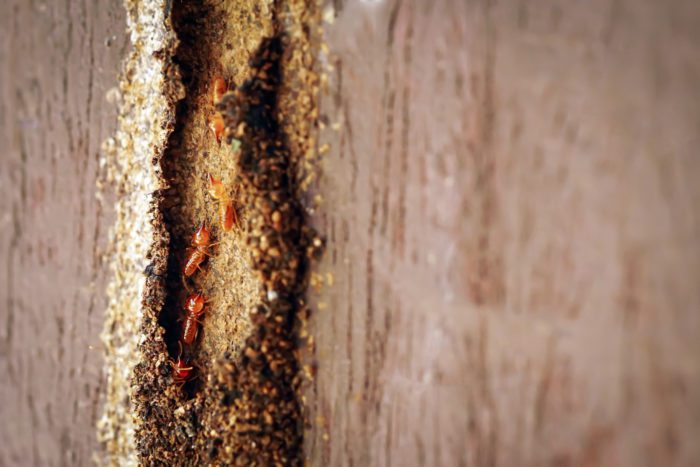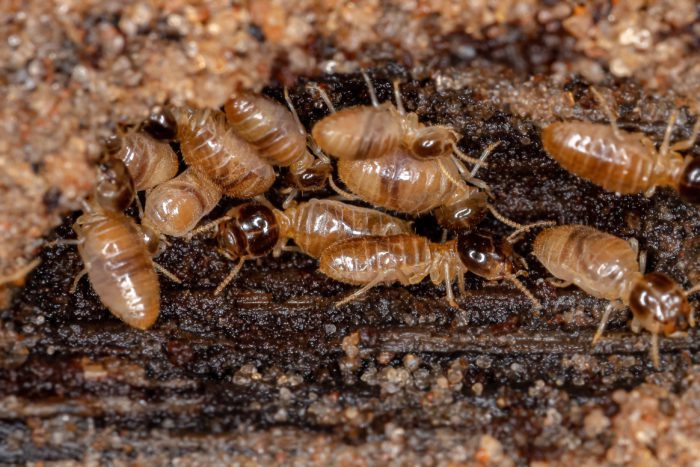It was a festive time and I had decided to clean my basement. While removing all my old junk I noticed something strange in the wooden beams. There were a lot of holes in the wood.
These holes in the wood are created by termites to get rid of their droppings which are also known as frass. There are also chances of termite droppings being present in the wood but how are we going to identify them?
Important Note: If you're tired of pests and want a reliable solution, then you should definitely consider seeking help from a professional pest control company. DIY solutions can be effective, but if you're dealing with a significant pest infestation, you don't want to rely solely on DIY methods. Pest control companies typically don't charge huge fees. You can fill out this form to receive free quotes from the top local pest control companies, and compare the quotes and see for yourself. Then, finally, your pest problems will be eliminated for good.
That’s what we will find out in the following sections, so read on!
Identifying Droppings

In general, termite droppings are tiny, about 0.04 inches long. But mainly the type of species they are decides the look of their droppings. Even their color is dependent on the type of wood they eat. Their color may range from beige to black.
The pellet (termite droppings) is oval, having 6 concave sides with rounded ends. These form the small mounds below the wood holes and can closely resemble small piles of pepper, dirt, or sawdust.
We will discuss the difference between sawdust and termite droppings later in this article.
Drywood Termite Droppings
When a drywood termite builds a nest in wood, they seal the hole through which they have entered into the wood. They can find everything inside the wood from food to water.
The only thing they don’t have is unlimited space. They create kick-out holes to push their droppings out of the nest.
Their droppings are oval-shaped capsules with rounded ends. These are 1 millimeter in length and may look like small piles of salt or pepper.
All their droppings are six-sided (hexagonal). All sides are concave in shape. The droppings can be of different colors depending upon the wood they have been eating.
Subterranean Termite Droppings
These termites do not leave visible droppings. They use their droppings in the construction of tunnels and mud tubes, so their droppings cannot be distinguished from the nest.
Ant Droppings vs Termite Droppings vs Sawdust

Ant Droppings
Ants leave their frass around the opening of their nest. This frass is much larger and bulky. It contains the bits and pieces from other ants consumed by them. There are also wood shavings mulched by the ants to make burrowing easier.
Sawdust
On seeing it for the first time, it is almost impossible to spot a difference between sawdust and termite droppings. The best way for finding a difference is to use a magnifying glass.
Their shape is what makes them different. Termite droppings are six-sided, granular pellets while sawdust will look more like tiny shavings and shiny silvers.
Termite Droppings
Apart from being oval-shaped and hexagonal, the droppings are usually scattered around their nest. It is much finer and more processed when compared with ant droppings.
Identifying Old and New Droppings
Termites can be active inside a structure for many years. But there is no clear way to tell the difference between the old and new droppings. There is no difference in color.
The difference doesn’t even matter as the discovery of droppings is a cause of alarm in itself whether old or new.
Conclusion
Termites eat natural substances and thus don’t produce droppings that would be dangerous to pets or humans. Also, termite droppings are not proven to be toxic or cause illness.
But it may cause irritation and allergic reactions to the skin when touched just like sawdust. If you have asthma or have any respiratory issues it is better to not have it around you. So it is advised to remove it from your house as soon as possible.
But it is never advised to take the cleaning process into your own hands. Pest control should be called for this purpose. Professionals are likely to use chemicals for this purpose, so one with chemical allergies better maintain distance during the process.

